Maybe you want to eat better but you are overwhelmed and don’t know where to start. Should you go ketogenic? Or vegan? Or gluten-free? What do those even mean? As a dietitian here’s what I recommend: instead of making your diet more complicated and restricted, make it simple. The easiest, most straightforward way I’ve found to improve your diet is to utilize the food groups.
(Pin this post to read later)
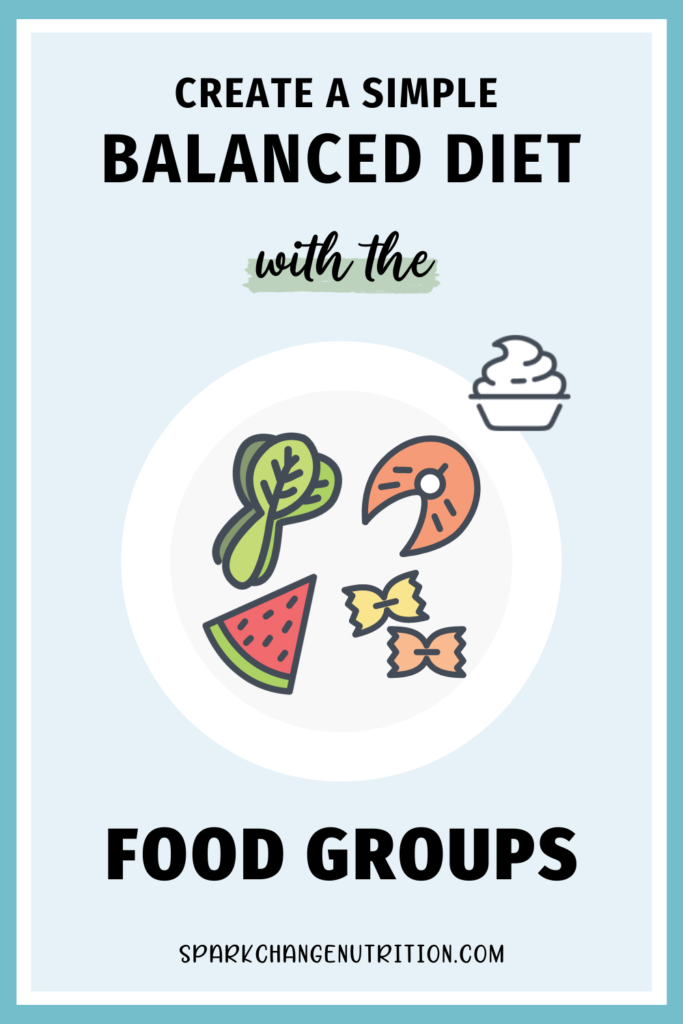
Just to make sure we’re all on the same page, I’m going to give you a quick overview of what the food groups are. I’ll also discuss how the foods within the food groups contribute to a balanced diet. Then I’ll share a few tips to help you use the food groups to improve your diet.
What are food groups?
As I mentioned in my beginner’s guide to balanced eating post, food groups are a way of translating microscopic nutrients into collections of foods that we can see and understand.
Those of you who are older (myself included) may remember learning about “The Food Guide Pyramid” or “MyPyramid” when you were in school. These were systems of grouping foods created by the government to help consumers make educated choices about what to eat. These guidance systems assigned different types of foods into “groups”. The idea behind this was that you should eat foods from a variety of these different groups or categories in order to have a well-rounded diet.
The most recent system for educating consumers about balanced eating is called MyPlate, and it was rolled out in 2011.1 MyPlate is based on the Dietary Guidelines for Americans.2 In my opinion, it’s a far more intuitive guidance system than its predecessors. It organizes food into five different groups:
- Protein
- Grain
- Vegetable
- Fruit
- Dairy
Foods within the same food group tend to have a similar nutrient profile. This means that they will nourish us in similar ways, by providing the same types of vitamins, minerals, carbs, protein, and/or fat. What this means for us is in practical terms is that, if foods in the same food group contain similar nutrients, then in order to get a variety of nutrients, we need to eat a variety of groups.
Here is what each of those food groups mean.
Protein
A “protein” food is a food that is a good source of, well, protein. Foods like meat, fish, beans, eggs, soy products, nuts, and seeds fall into this category. There are lots of vegetarian protein options, so this group is not just for meat-eaters. When picking your protein choices, shoot for lean and low-fat options when possible. Also, try to include seafood in you diet a few times each week.3
Grains
A “grain” food is a food that comes from a grain product. Foods like rice, wheat, and oats are grains. Anything containing those grains, or any foods made from those grains (like flour and oatmeal) are going to fall the grain group. Grains are primarily made up of carbohydrates, or “carbs” for short. They also either naturally have B vitamins and iron or are enriched to include them (because those nutrients were lost during processing).4
Although starchy vegetables like potatoes and green peas seem like they could go in the grain group, you shouldn’t stick them there. That’s because they contain different nutrients. (Remember, food groups are groups of foods that have a similar nutrient profile.) One exception to this is corn. When corn is in the form of cornmeal, popcorn, or grits, it is considered a grain. Corn kernels or corn on the cob are considered to be vegetables.
When deciding which grains to eat, the rule of thumb is to “make half your grains whole.”
This means you should aim to include whole grain choices about half of the time. Examples of whole grains are bread made from whole wheat flour, brown rice, or quinoa.5
Vegetables
Foods in the vegetable group are low in calories and sodium and have no cholesterol and little-to-no fat. At the same time, they are high in vitamins and minerals, and many are high in fiber.4 Foods in the “starchy vegetable” and “beans and peas” categories are also high in carbohydrates (think – white potatoes, green peas, pinto beans, or lentils). Otherwise, vegetables tend to be low in carbs. Different color vegetables will have different types of nutrients, so you should strive to “eat the rainbow.”5
Fruit
Foods in the fruit group are similar to those in the vegetable group, in that they are low in fat and calories and high in vitamins. Like vegetables, many fruits are also high fiber, but the fiber content is diminished by juicing or peeling a fruit. Fruits are also high in phytochemicals and water.4 Just like veggies, different color fruits will have different types of nutrients, so you should strive to “eat the rainbow.”
Dairy
“Dairy” is a group that includes protein- and calcium-rich foods. They are considered protein-rich because a serving of dairy contains roughly the same amount of protein as an ounce of meat. This group includes the obvious dairy products, like milk and things made from milk (e.g. yogurt and cheese).
A little less obvious is what the Dairy group does not include. It does not include foods that are primarily fat, like butter, cream, sour cream, or cream cheese.
If you typically skip out on milk-based dairy products, don’t worry. You can substitute soy versions of dairy foods. Just make sure they are fortified with calcium and vitamins A and D.6
Translating food groups into healthier eating
Now that you know what the food groups are, I’ll explain how you can use them to make your diet more balanced.
Compare your plate to MyPlate
A really easy, visual way to make your eating more balanced is to eat the “MyPlate” way. As you can see in the graphic below, MyPlate recommends having a portion of food from each food group at every meal:
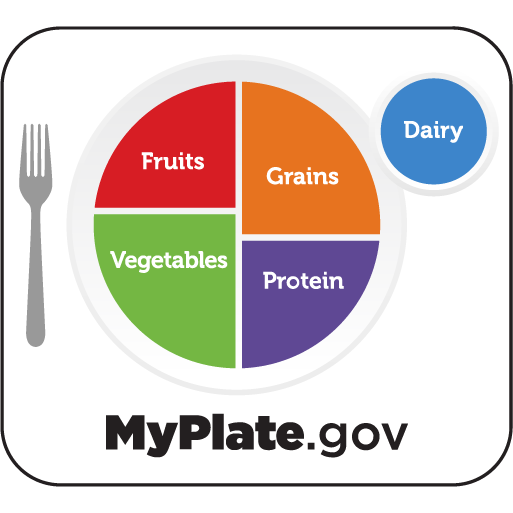
Here are some things to note about this graphic:
- Half the plate is made up of fruits and vegetables. These foods are nutrient-dense, meaning they “have positive health benefits with relatively few calories.” Because nutrient-dense foods are “the foundation of a healthy eating pattern,” you want to have a lot of them on your plate!5
- You can also see that the proportions of grains and protein are pretty small; I would say a lot smaller than most of us are used to. That’s because we don’t want (or need) these food groups to make up the majority of our meals.
- MyPlate also includes a section for dairy. I think of this as representing a glass of milk or a serving of yogurt on the side, but really, it can be any dairy food, such as cheese in a casserole dish.
When you sit down to a meal (or preferably, when you are preparing your meal), take a moment to compare your plate to MyPlate. Do you have a fruit and a vegetable? Is your portion of grains too large? Do you have a serving of dairy?
Fortunately, there are a bunch of products out there that you can use as MyPlate reminders. These vary from placemats to plates printed with the MyPlate graphic. Here is one for adults, and another one for children.
You can also compare your plate to MyPlate by getting your own customized MyPlate plan. Answer a few questions, and it will generate a pdf showing you how much of each food group to eat each day. There is also a space to enter what you did eat, so you can use it as a food log too. You can find yours here:
A quick note on following the MyPlate Plan
I just want to mention that it is neither realistic nor necessary to eat a serving of each food group at every single meal every single day. Some meals you might eat a lot of one food group and none of another (like if you have a big salad for lunch). Over the course of a day, this kind of balances itself out. Don’t stress yourself out about trying to follow this plan perfectly. Just note where you are and try to make gradual improvements from there.
Focus on eating more of a particular food group
Another way to use the food groups to improve your diet is to focus on eating more of a particular food group. For many of us, eating more fruits or vegetables is a good starting place. Some examples of goals to set around this are:
- Eat a piece of fruit with breakfast at least 3 days per week
- Swap out an afternoon granola bar for a snack that includes a vegetable, such as carrots and hummus or peanut butter and celery
- Try at least one new vegetable every week (this one works well with children; you can even have them pick the vegetable out at the grocery store or farmers’ market)
I typically recommend focusing on increasing your intake of beneficial foods versus trying to decrease your intake of less-healthy foods. I’ve found this is easier to accomplish, and if you eat more of the good stuff, you generally have less room in your stomach for the not-so-good stuff.
Focus on eating more variety of foods within a particular food group
Even if you are already eating a lot of a particular food group, you can still improve your diet by changing up what you eat within that food group. In fact, the Dietary Guidelines for Americans recommend eating certain types of foods within food groups a certain number of times per week. Here are a few examples for someone who is on a 2,000 kcal diet:
- In the vegetable group:
- 1.5 cup-equivalents per week of dark-green vegetables
- 5.5 cup-equivalents of red and orange vegetables
- 1.5 cup-equivalents of beans/peas/lentils
- 5 cup-equivalents of starchy vegetables
- 4 cup-equivalents of other vegetables
- In the protein foods group:
- 26 ounce-equivalents of meats/poultry/eggs
- 8 ounce-equivalents of seafood
- 5 ounce-equivalents of nuts/seeds/soy products7
Please don’t let this list overwhelm you (I personally find it a little overwhelming!). I’m merely putting it out there so that you see that, even within a food group, there are ways to add variety to your diet.
If you want to know what this would look like for your specific calorie-level, then check out Page 144 of the Dietary Guidelines for Americans 2020-2025.
Want to learn more about the food groups?
If you want more detailed information regarding the MyPlate food groups, then visit the links below:
And if you want more information about foods within each group, the FoodPrint Real Food Encyclopedia is another great place to look:
What food group do you want to eat more of? Leave a comment below!
References
- MyPlate Resources | Food and Nutrition Information Center | NAL | USDA. Accessed March 3, 2022. https://www.nal.usda.gov/legacy/fnic/myplate-resources-1
- About Us | MyPlate. Accessed March 3, 2022. https://www.myplate.gov/about-us
- Protein Foods | MyPlate. Accessed March 3, 2022. https://www.myplate.gov/eat-healthy/protein-foods
- Brown AC. Understanding Food: Principles and Preparation. 4th ed. Wadsworth Cengage Learning; 2011:274,301,348.
- Duyff RL. Academy of Nutrition and Dietetics Complete Food and Nutrition Guide. 5th edition. Houghton Mifflin Harcourt; 2017:10,27-34.
- Dairy | MyPlate. Accessed March 7, 2022. https://www.myplate.gov/eat-healthy/dairy
- U.S. Department of Agriculture and U.S. Department of Health and Human Services. Dietary Guidelines for Americans, 2020-2025. 9th Edition. December 2020. Available at DietaryGuidelines.gov.
Photo credit: Photo by Alex Block on Unsplash
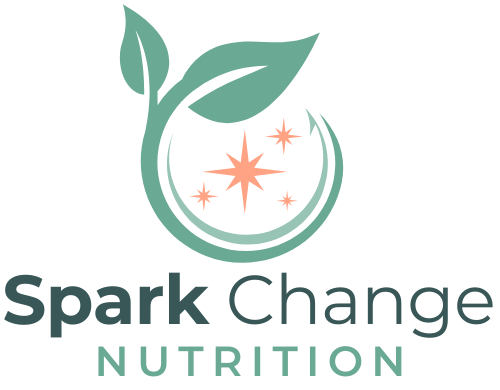
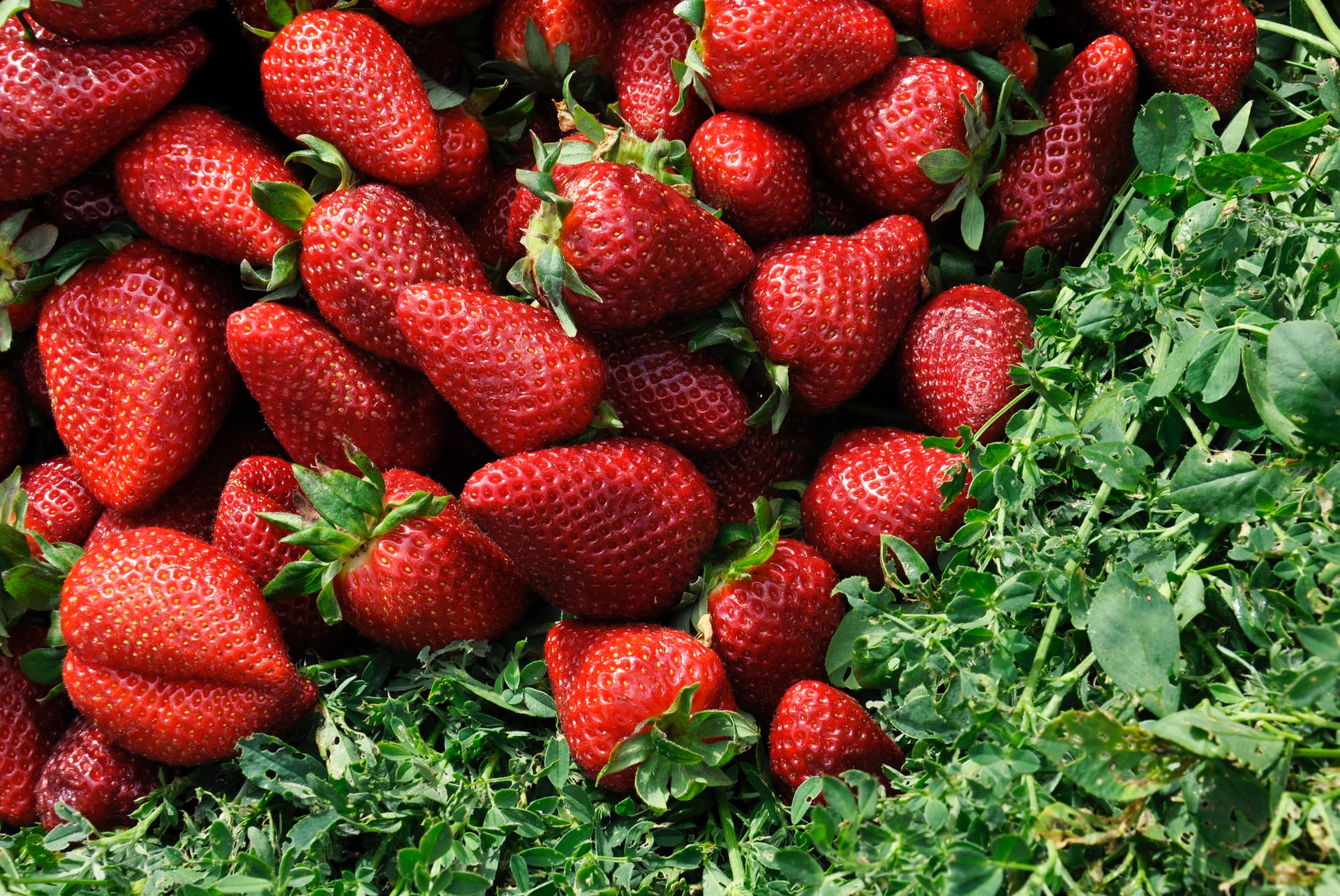

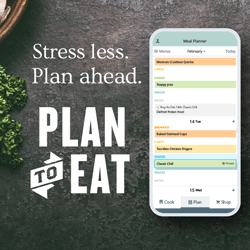

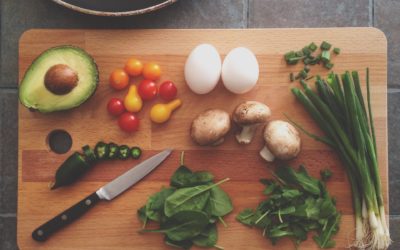

0 Comments